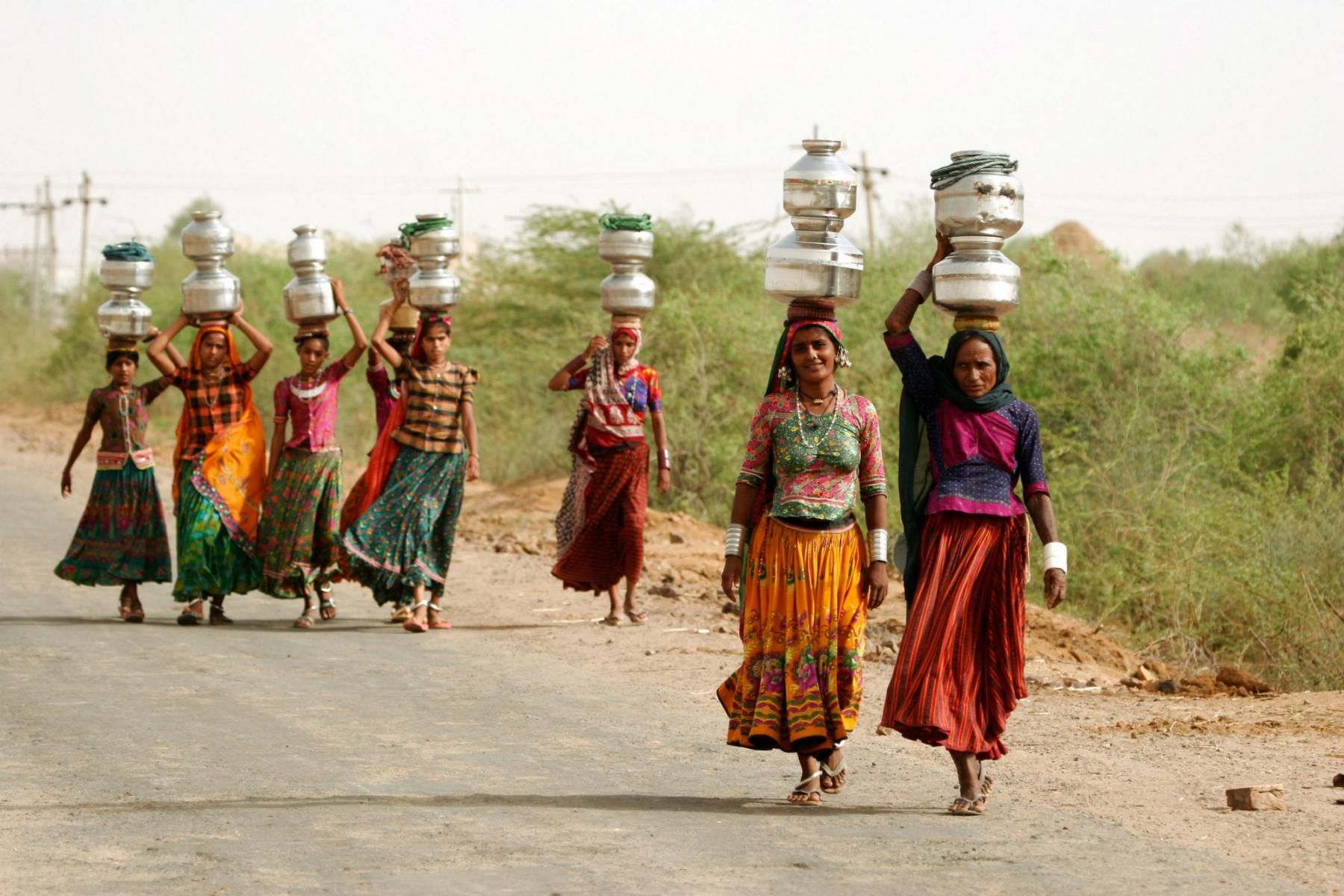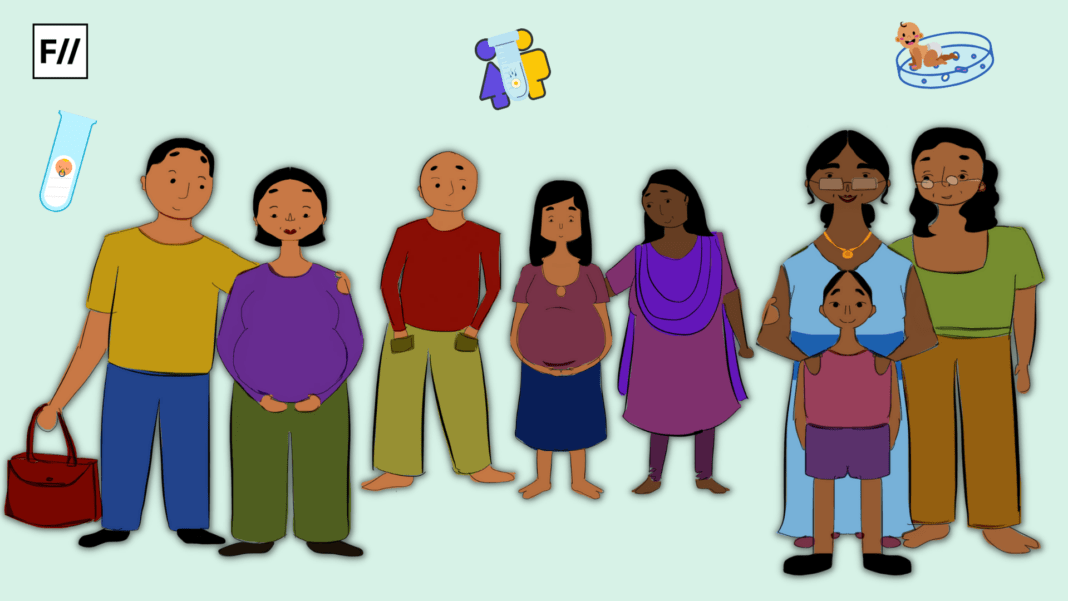The Goa government has launched the ‘Save Water to Get Free Water’ scheme making it the first state to supply water free of cost to its citizens. Households will not be charged for consumption upto 16000 litres. Earlier in the year, Odisa’s Puri became the first city to have a ‘Drink-from-Tap Facility’. Water initiatives in the country are rolling in fast and furious, giving a boost to the physical and psychological well being of its citizens.
While these are heartening, yet the ambit of water can be largely accused of gender blindness. The National Water Policies (1987, 2002, 2012) have failed to address the special needs, issues, concerns and realities of women as a specific group. So while the community has increased access to this vital resource, women’s access and control to the same remains severely restricted.
Women share a deep relationship with water, an almost reverential relationship, for water is as sustaining, nurturing and nourishing to life as the women themselves who are the largest users of it in their roles as domestic workers and also in their roles in allied spaces as fisheries, cultivation, garment industry, food processing units etc.
Women share a deep relationship with water, an almost reverential relationship, for water is as sustaining, nurturing and nourishing to life as the women themselves who are the largest users of it in their roles as domestic workers and also in their roles in allied spaces as fisheries, cultivation, garment industry, food processing units etc. Women are the biggest users of water and therefore it is not uncommon to see women stand in long snaking lines for that one bucket of water in urban spaces or walk several kilometres balancing heavy pots on their heads in rural areas. This is not without its consequences.
The burden of work disproportionately rises both in terms of intensity and time consumed. Empirical evidence suggests that women spend 382 minutes a day in the domestic sphere while men only put in 51.8 minutes. This then leaves women with very little time to pursue other productive roles, like going to school or learning a skill that can open up livelihood choices or even getting into entrepreneurial roles. Further their leisure time is also curtailed severely. In addition, women’s physical and psychological vulnerability increases due to heat, exhaustion, stress and increased chances of sexual assault on the long, lonely treks to water resources. So women as a group are indeed disproportionately affected by the unavailability of water resources and lack of access or control of available water sources.
The National Water Policies have not taken into account women’s unique positions, their vulnerabilities, realities. They have articulated women’s concerns as members of a ‘household’ since the household is the accepted unit of operation in the policies. So the uniqueness of women’s position vis-à-vis water has been subsumed within a larger set contributing to their invisibility herein.
Compounding this is also the overlooking of women as crucial managers of this resources. Empirical evidence does point out that women are excellent at distribution and management of this resource and share if among cultivable land, main crop land, livestock and domestic sphere. In fact during times of scarcity, women are more efficient managers of this resource and are able to conserve and use it with finesse. Also, the indigenous knowledge of women in predicting availability, reliability and quality are swished aside as being ‘ad hoc’ and ‘unscientific’.
The policies also locate water rights within land rights thereby leaving out of the ambit women and the poor. Women’s access and control overland issue is poor and therefore their ownership, access and control over water resources also become limited.
The policies also locate water rights within land rights thereby leaving out of the ambit women and the poor. Women’s access and control overland issue is poor and therefore their ownership, access and control over water resources also become limited. Infact the informal groundwater market which regulates water for irrigation, domestic use and other areas also links water rights to property rights. Women have few rights over property, their control is severely curtailed and so is their control and increased access to water.
The incorporation of women in planning, provisioning and management of water resources at all levels in unhappily absent. Most Water Users Associations (WUA) are male dominated and women’s representation is too low to make any impactful changes. Community resources like handpumps, taps etc are controlled by men. Even their locations are demarcated by the men. This when really women have more engagement with the resource.
Every water initiative is about improving the lives of the people by improving access to good quality water. The National Water Policies also aimed at the same through planning and development of newer water resources and optimal utilisation of the same. However, by ignoring the specific needs of women, the policies have overlooked women’s essential link with water. Their experiences – both personal and collective have not found a reflection in the policy initiatives. Long lines are still common, women continue to trek long distances even today for that one coveted pot of water, continue to languish under the strain of domestic burden which includes procuring water and making it available for other domestic participants. The gender blindness of these initiatives keeps women in marginalised and unproductive roles.
The Goa Government’s scheme is worthy of a mention. However the loudest applause will be reserved to those initiatives which will bring women’s realities at the vortex. Gender blindness or even gender neutrality will certainly mar the chances of women to lead empowered lives since the articulations which position themselves as being unbiased are in reality narratives from the perspective of men.
Also read: Unhygienic Public Latrines: Women Bear The Brunt Of Inadequate Sanitation Facilities
References
- Gender equality in the 2030 Agenda: Gender-responsive water and sanitation systems, UN Women
- Water and Gender, UN Water
- National Water Policy, 2012, Ministry of Water Resources, Government of India
Featured Image Source: Climate Links




